OCTOBER 31, 2022 : Yesterday the Tobacco Museum was closed. We thought if we get an early start, we can squeeze it in this morning before we drive to our next destination. We were there by 8:30 in the morning and happy to see the door to the museum open.
The Tobacco Museum is located in the middle of the city in a historical building which formerly housed the Greek Tobacco Organization. Most of the exhibits show the machinery used for processing and packaging the tobacco. It also had exhibits about the unionization of the tobacco industry, and about the introduction of technology into the process. The signage in the Tobacco Museum was all in Greek, and we used Google Translate to read it. As far as we could see, nowhere in the museum is there any mention of a Jewish connection.
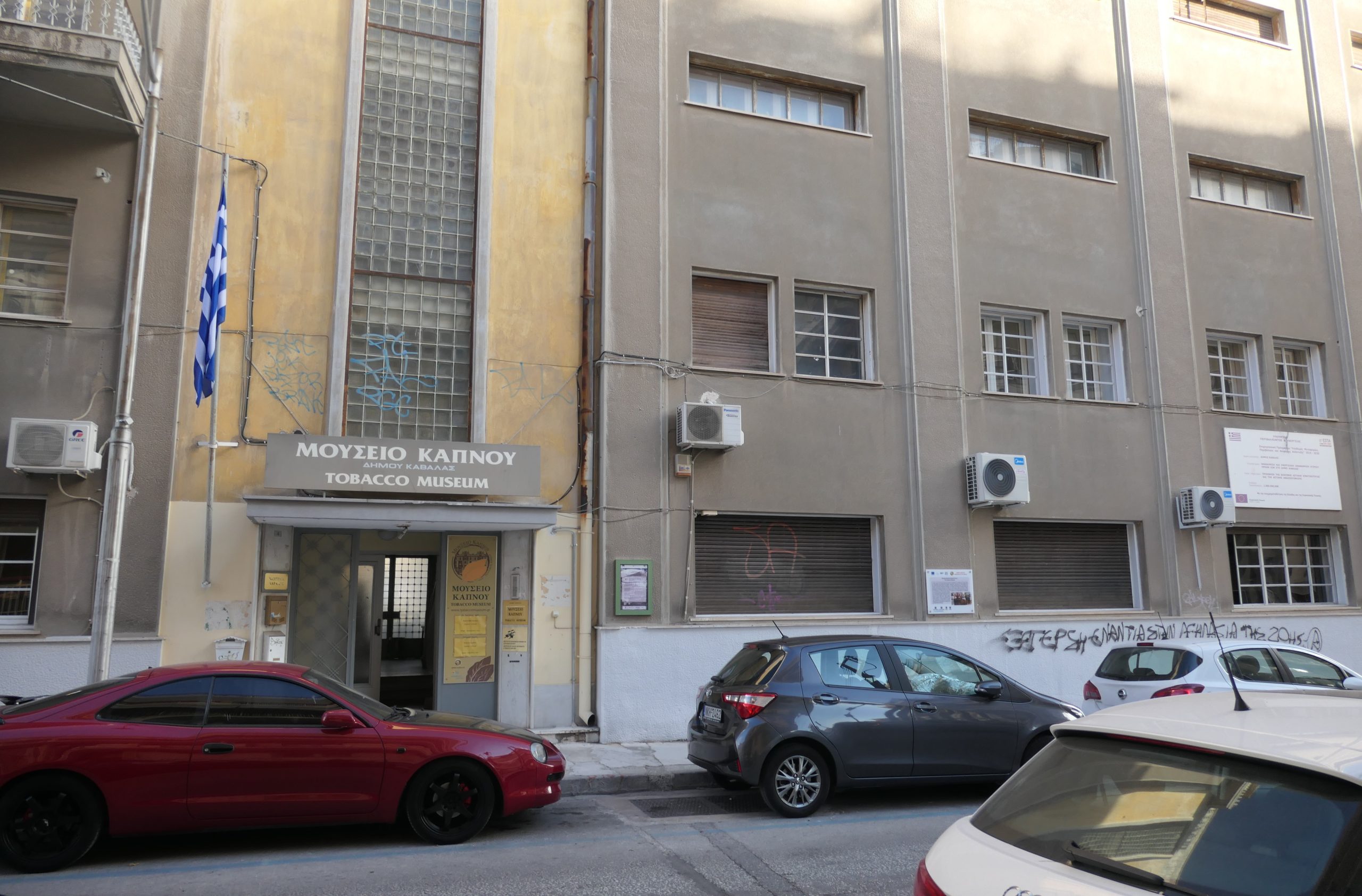
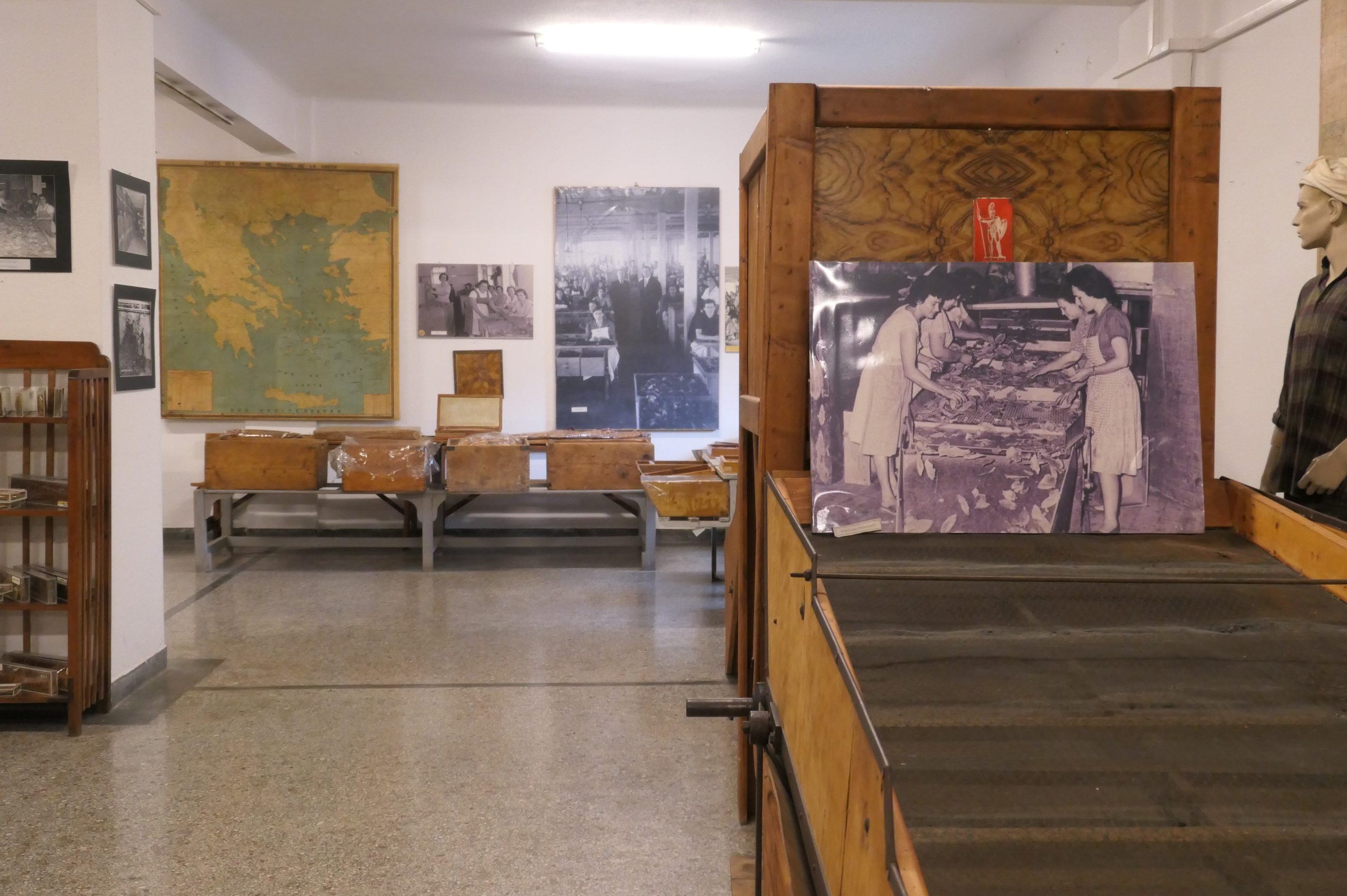

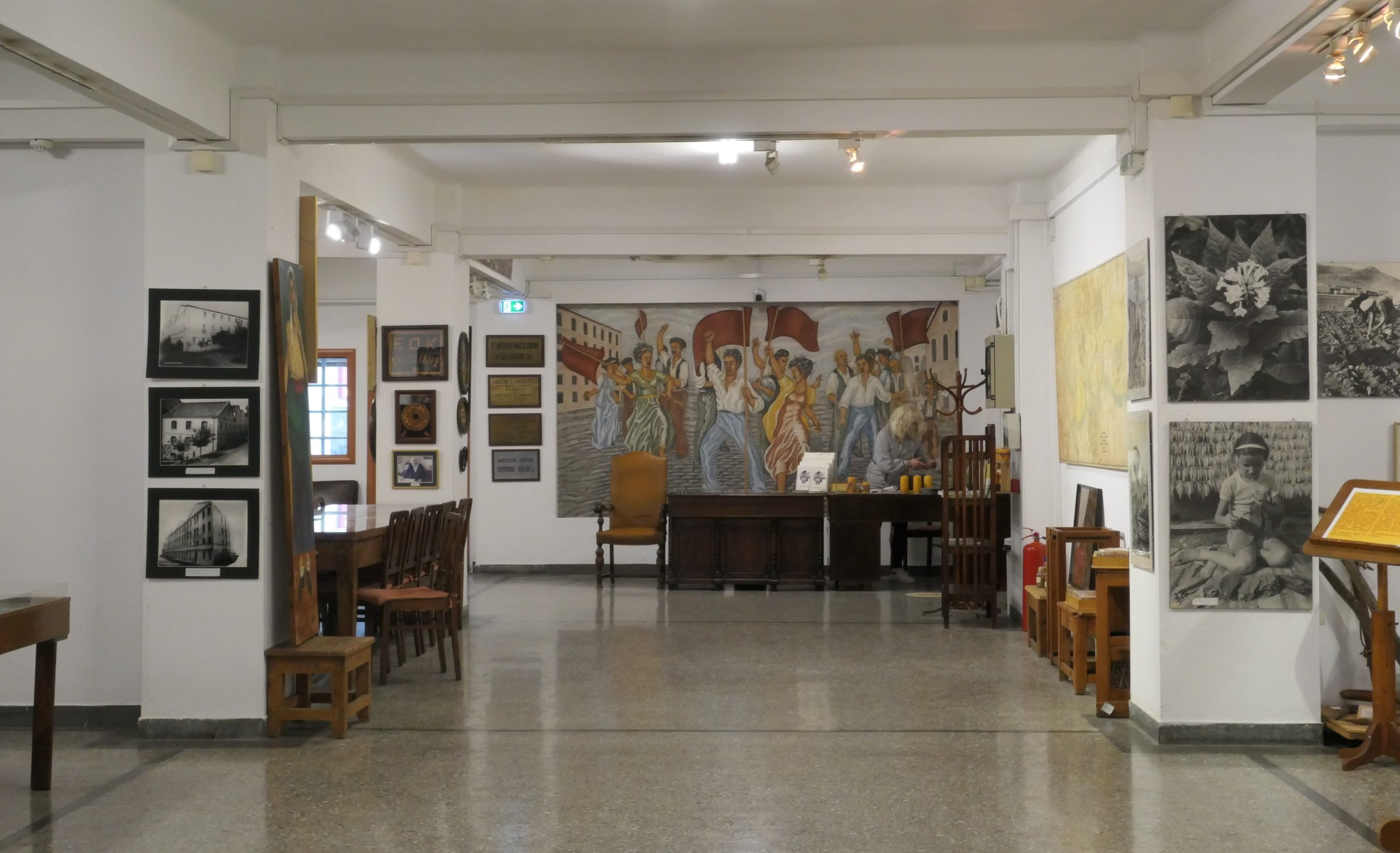
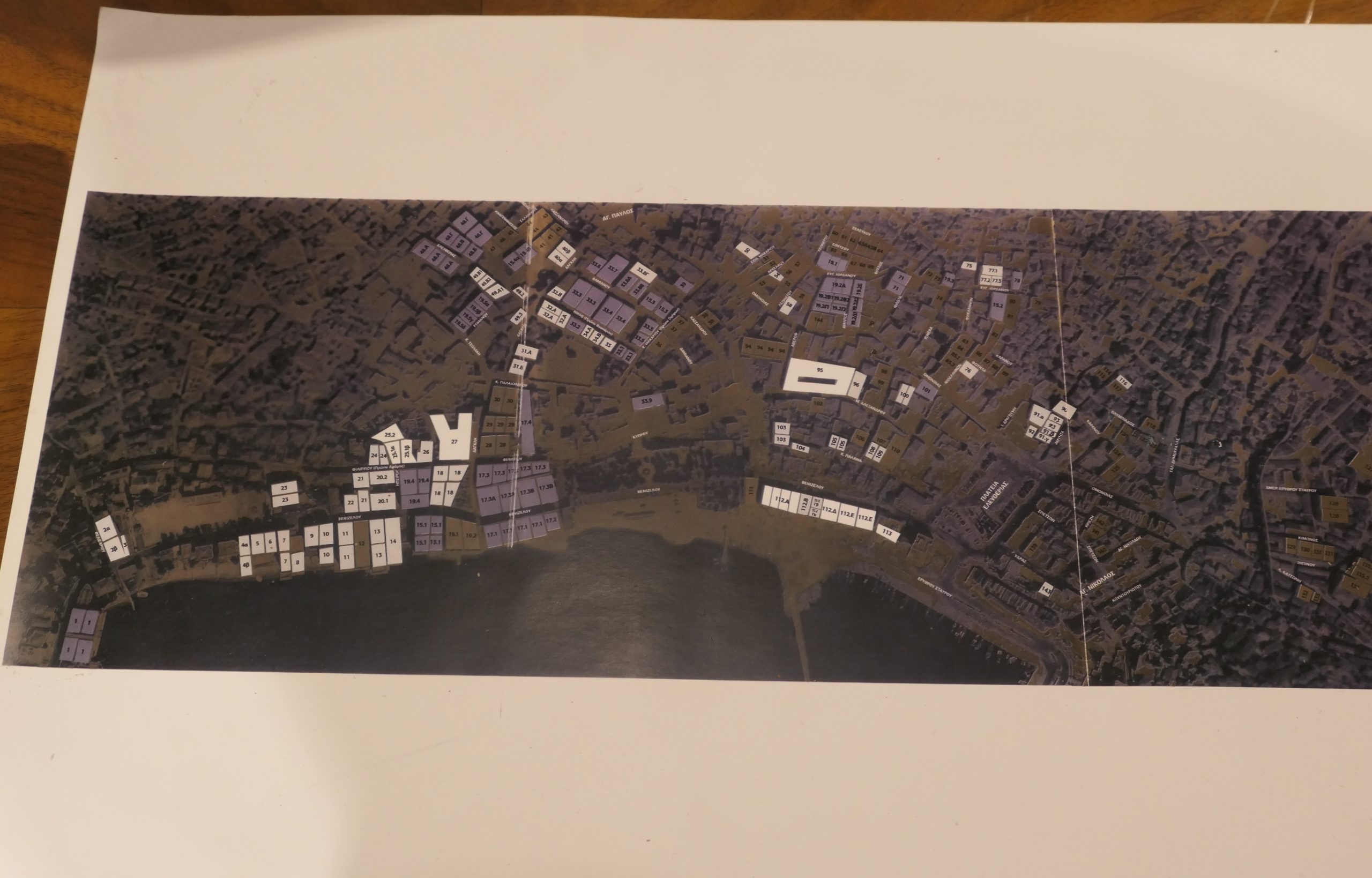
From doing research for Wandering Jew, we know that the Jewish community in Kavala had some wealthy tobacco merchants who owned some of the tobacco companies. In addition, over half the Jewish population at the time worked in the production of the tobacco.
The city at one point had dozens of tobacco warehouses. Some are still standing, and the municipality of Kavala has a website that lists them. If you look closely at the names of the owners on some of the warehouses, they are obviously Jewish names.
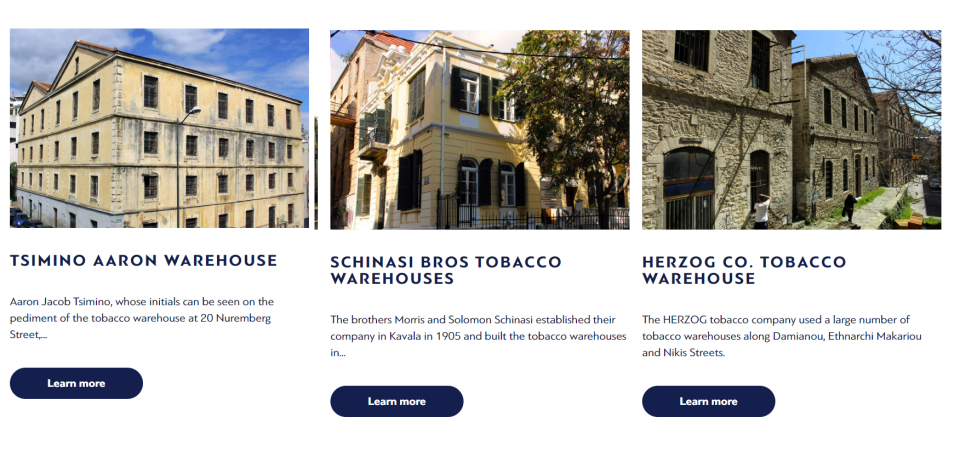
When we arrived at the museum, another Greek-speaking couple arrived at the same time. As we were about to leave, he asked us in English where we are from. When Mark replied that we are from Israel, he answered “אתה מדבר עיברית?” (Do you speak Hebrew?). Turns out they live in Athens but spent several years living in Tel Aviv. His grandfather is from Xanthi, a town about an hour away from Kavala that also had a Jewish population.
He then asked us if we saw the Holocaust Monument. We told them we had looked for it yesterday and did not find it. Turns out that the municipality erected a new monument near city hall and they had just come from there. They gave us instructions on how to find it, and that was now our next destination, feeling lucky to have met them.
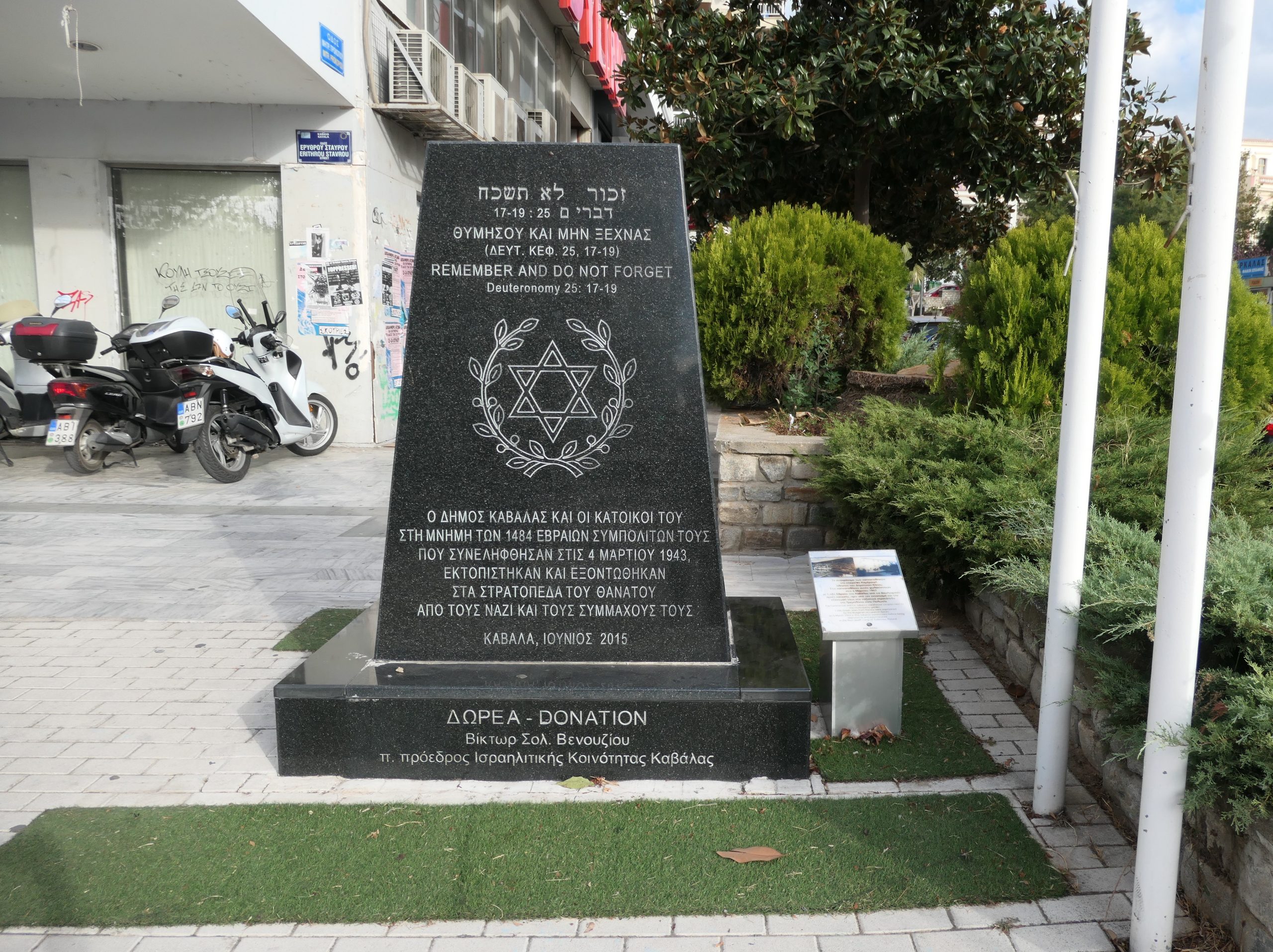
The monument was dedicated in 2015 by the Kavala municipality to commemorate the 1484 Jewish citizens of the town that were gathered here on March 4, 1942 and sent to their deaths. From the signage we learned that the memorial is located next to the warehouse that the Jews were put into before their transport to Treblinka.
It was time to move on to our next destination – Drama – a town about an hour north of Kavala. Like Kavala, Drama also had a tobacco industry and was occupied by the Bulgarians during WWII. They too were gathered in a tobacco warehouse before transport to Treblinka. The few survivors failed to revitalize the community and eventually the community was dissolved. We knew of three Jewish Heritage sites to explore – the Old Cemetery, the New Cemetery, and the Holocaust Memorial.
Our first stop was the New Cemetery. Once again, this was a cemetery surrounded by a high wall and with a locked entrance gate. In the distant corner, we saw the cemetery has a few dozen gravestones. We took photos through the bars of the gate as best we could. We walked around the cemetery walls to see if it is possible to get a better view, but it was solid wall all around.
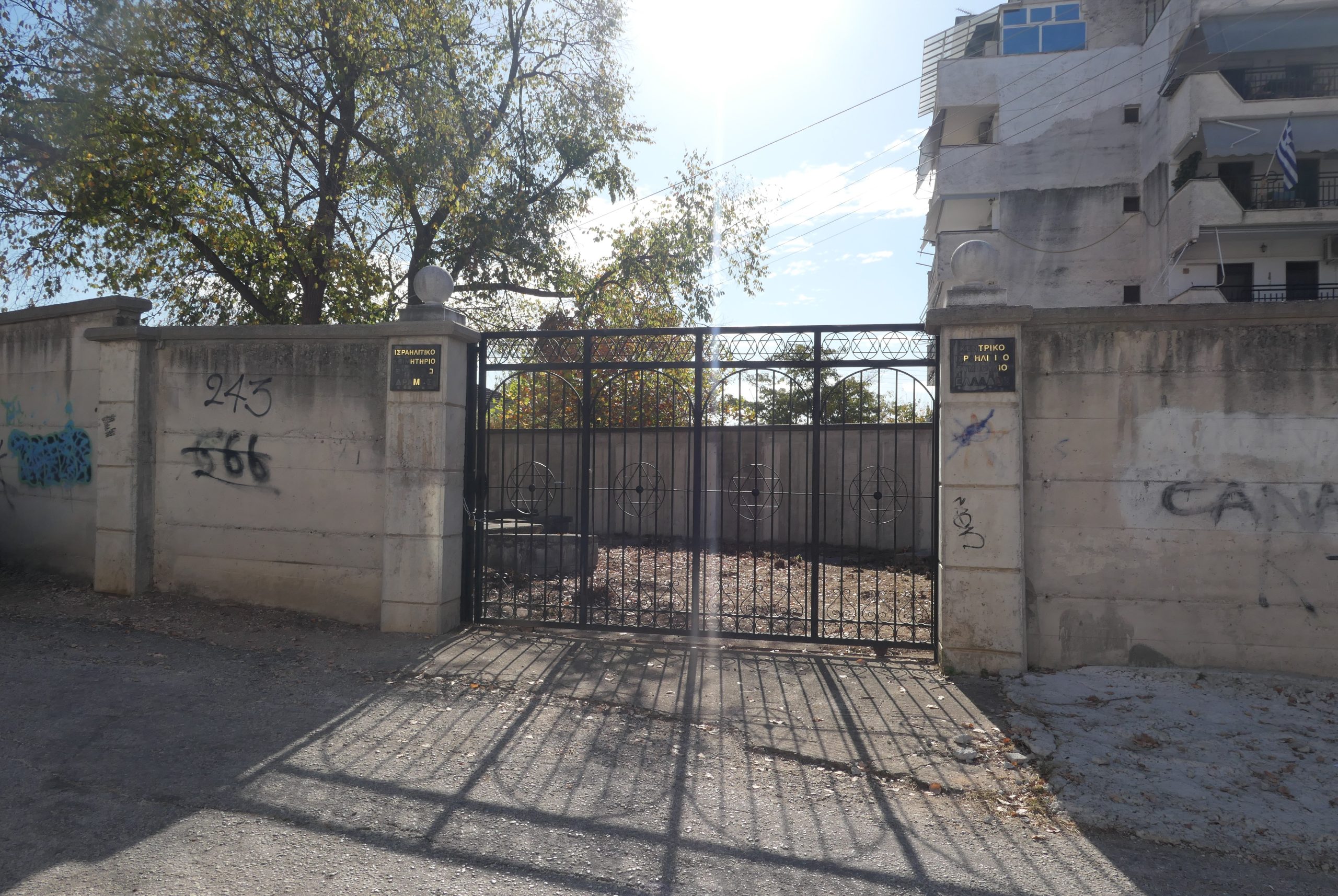
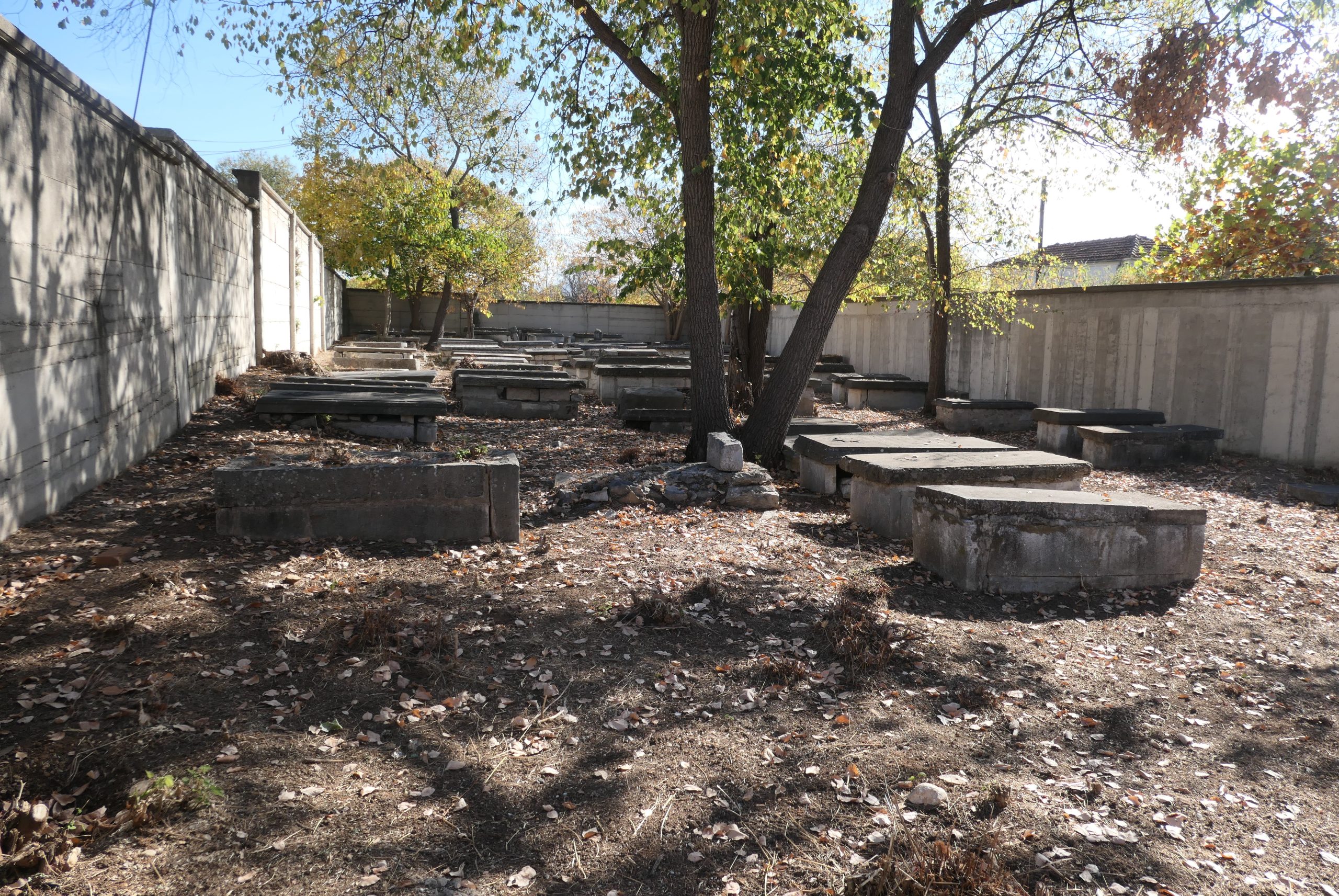
From there we wanted to visit the Holocaust Memorial. We knew that is located somewhere in the park of Aghia Barbara in the center of the city. The park is an enchanting place with a walkway over a small streaming river fed by the local springs. The water is crystal clear. Ducks abound.
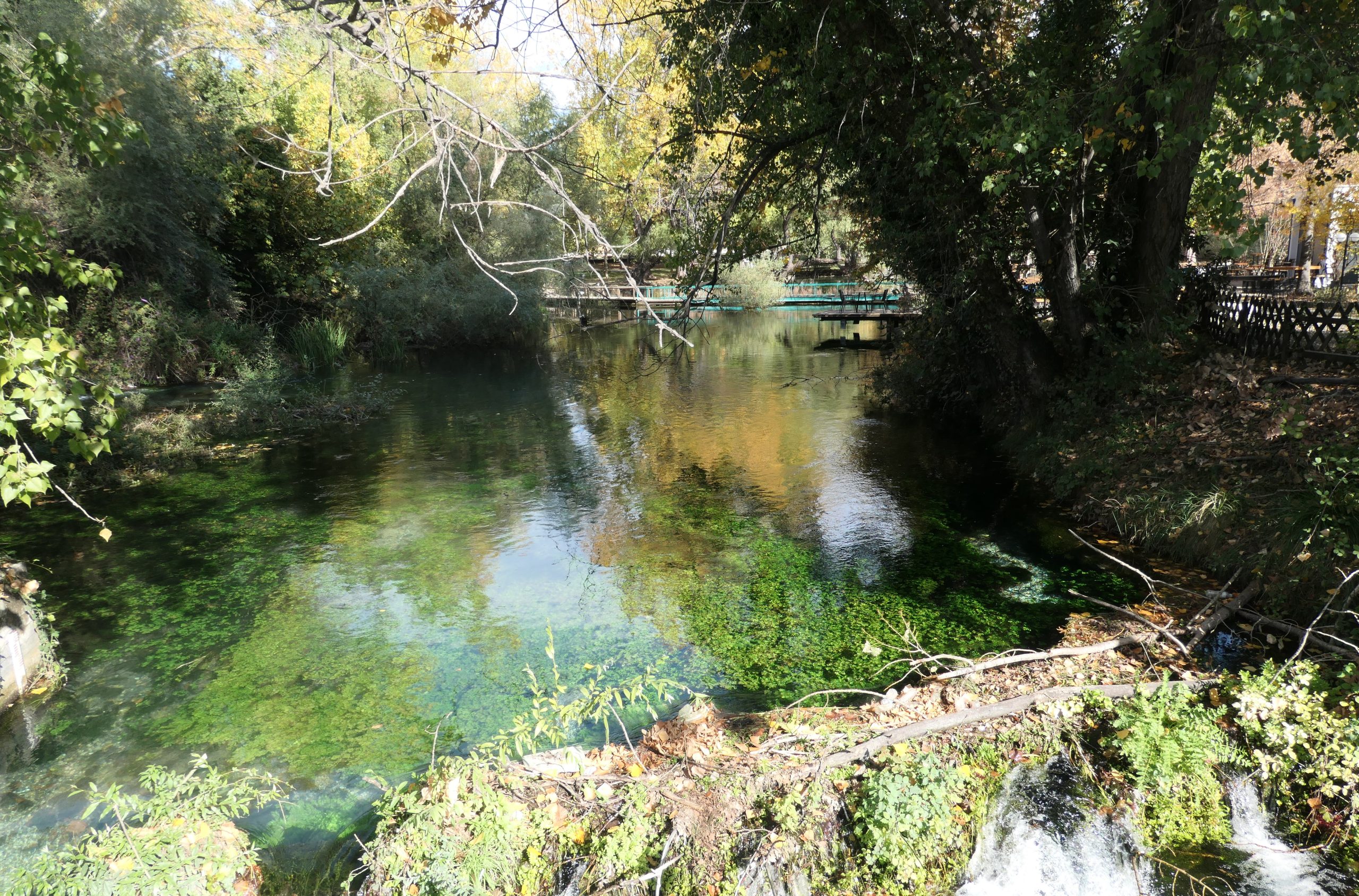
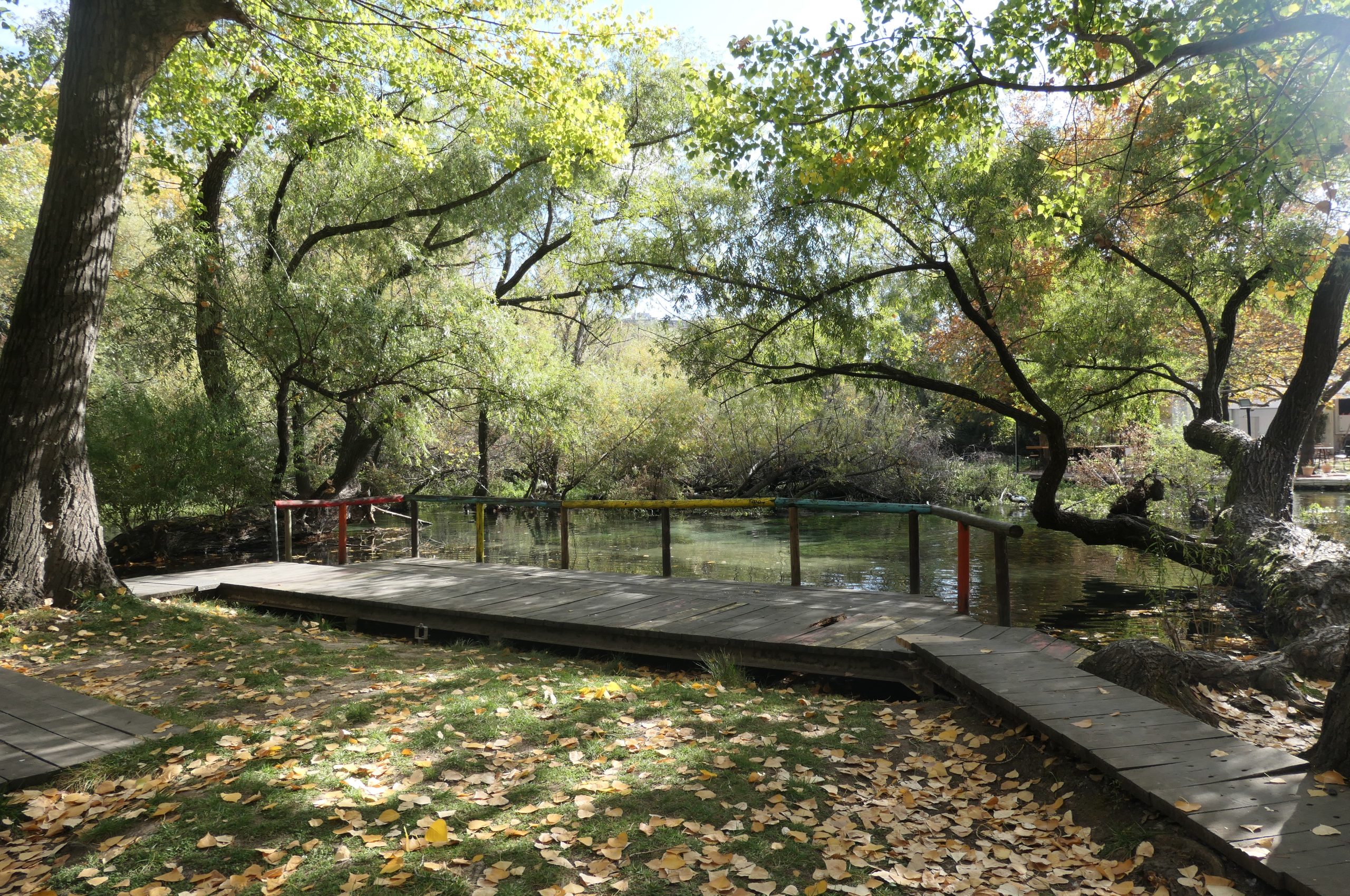
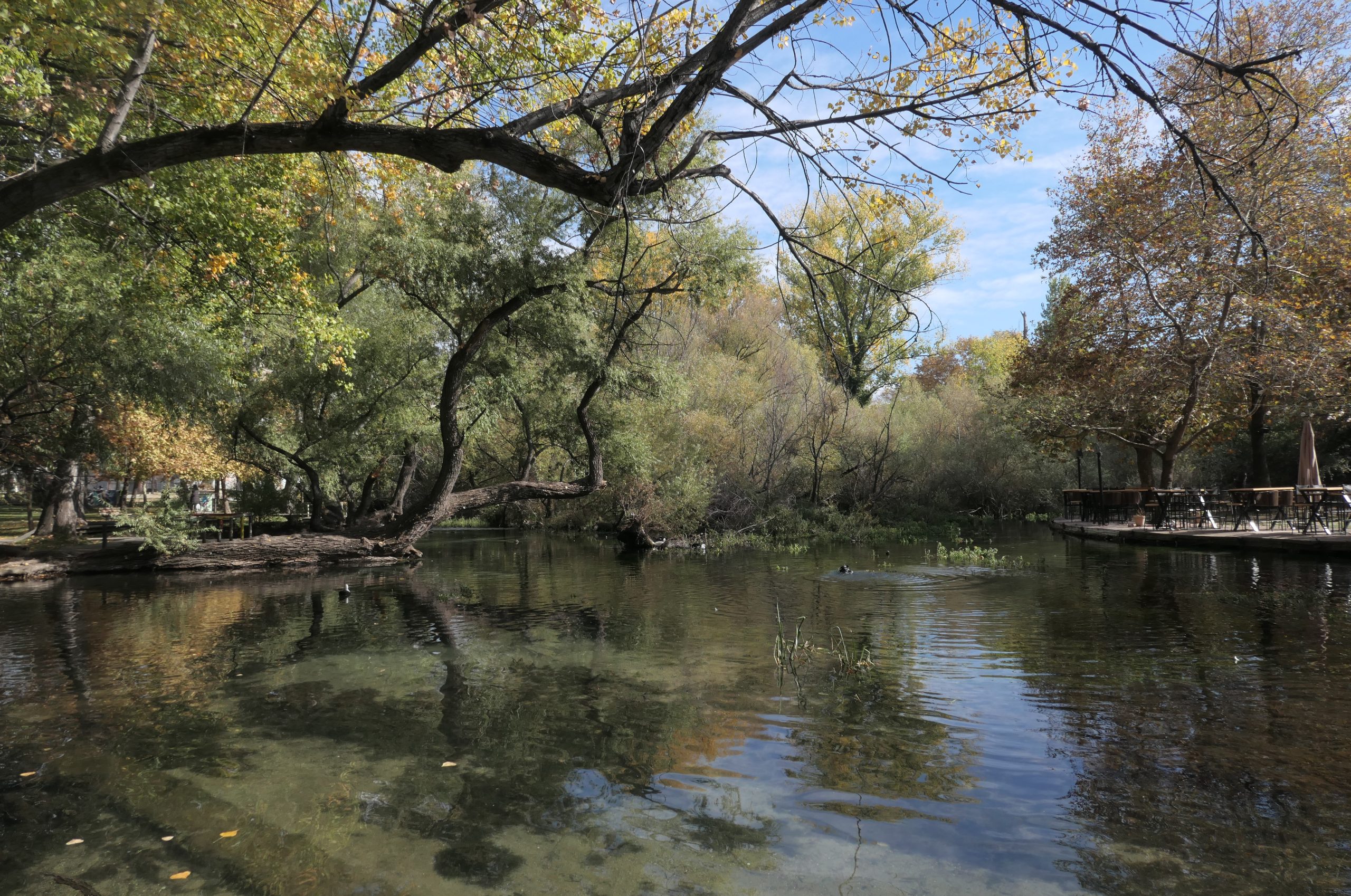
It did not take long, and we saw the memorial, clearly placed in the center of the grassy lawn. It 1999, the municipality erected this Memorial for the Jewish Martyrs of the Holocaust.

After seeing the memorial, we walked around Drama. The city seems to be in the midst of a large renovation. At a hardware store, we purchased a ladder. We thought that using the ladder, we will be able to see over the walls of the cemeteries and better photograph the graves. Now well supplied, we returned to the New Cemetery with ladder in hand.
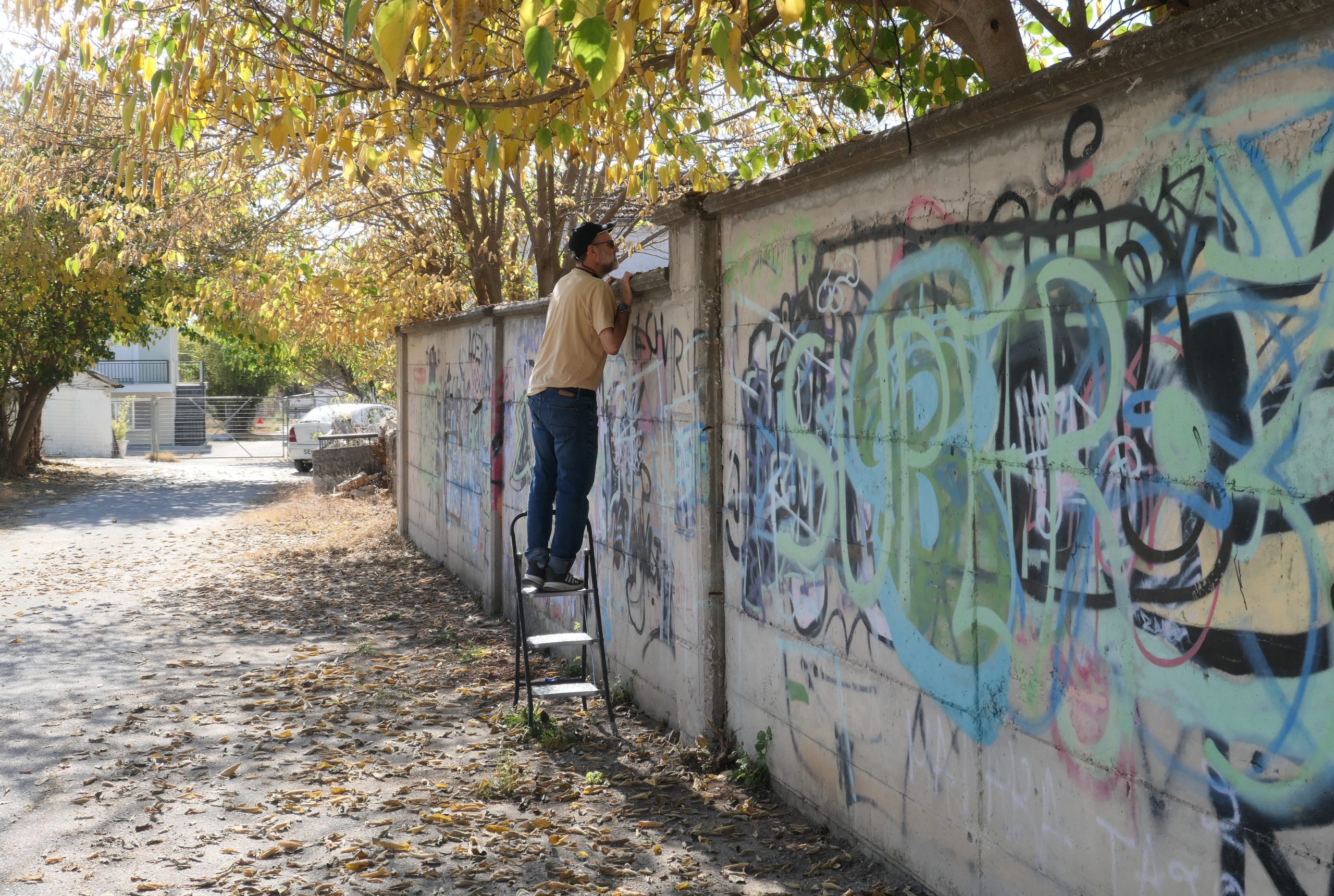
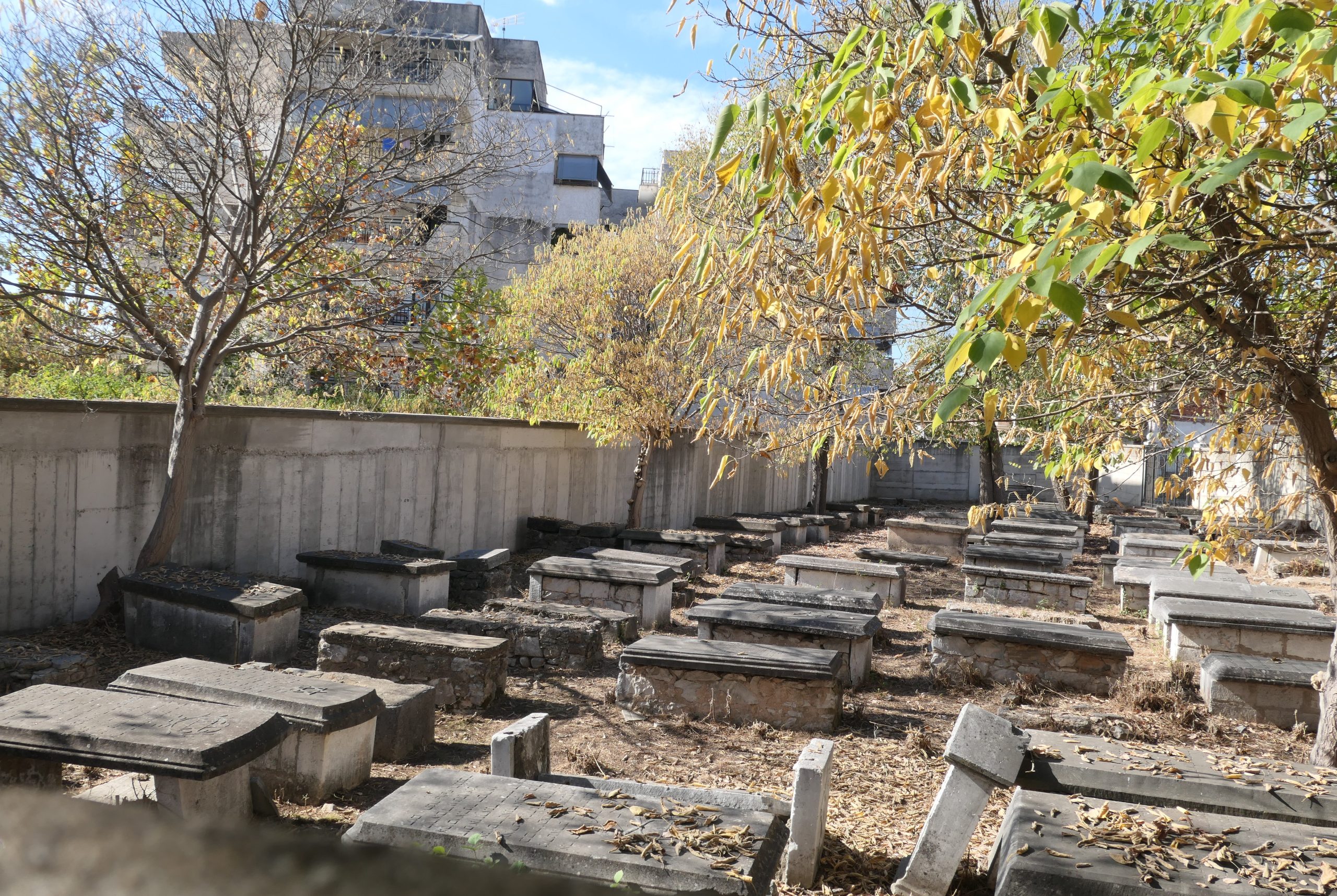
There is also an Old Cemetery in Drama. I was skeptical and thought we would be going on a wild-goose chase to find it. In many communities, the location of where there once was an old Jewish cemetery is known, but the site has been totally built over with nothing left to see. I thought this would be more of the same. We headed to the location of the old cemetery, and to our surprise found an intact cemetery nestled among apartment buildings.
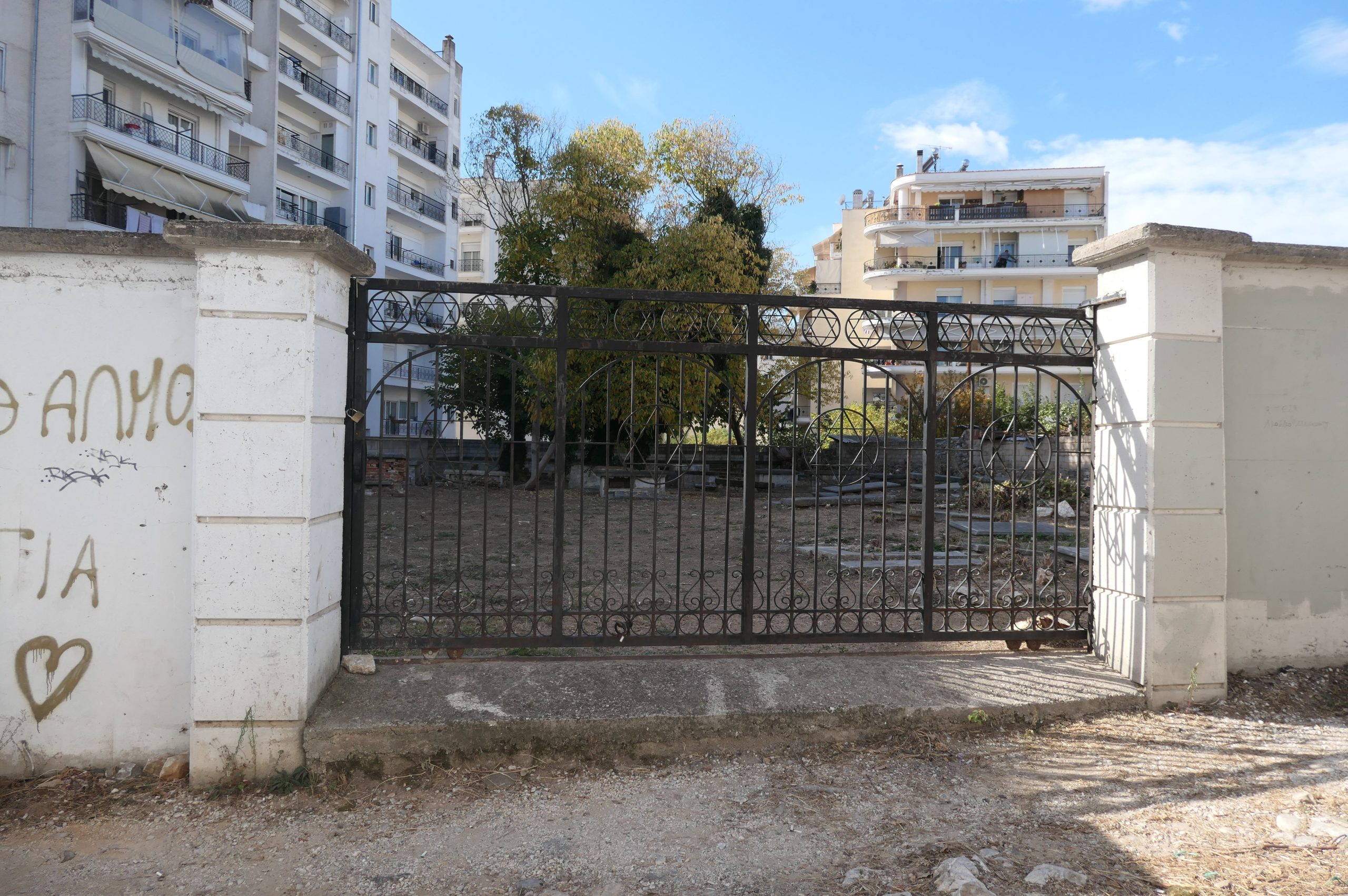
Once again, like in Kavala, the memorial and the cemeteries are the only remaining evidence that there once was a Jewish community in Drama. So far it had been a good day, successful in finding several sites. We knew however that the next place would be a long shot.
We drove to Serres, a town about an hour west of Drama. For the first time, we were on small back roads and not a main highway. The scenery was spectacular.
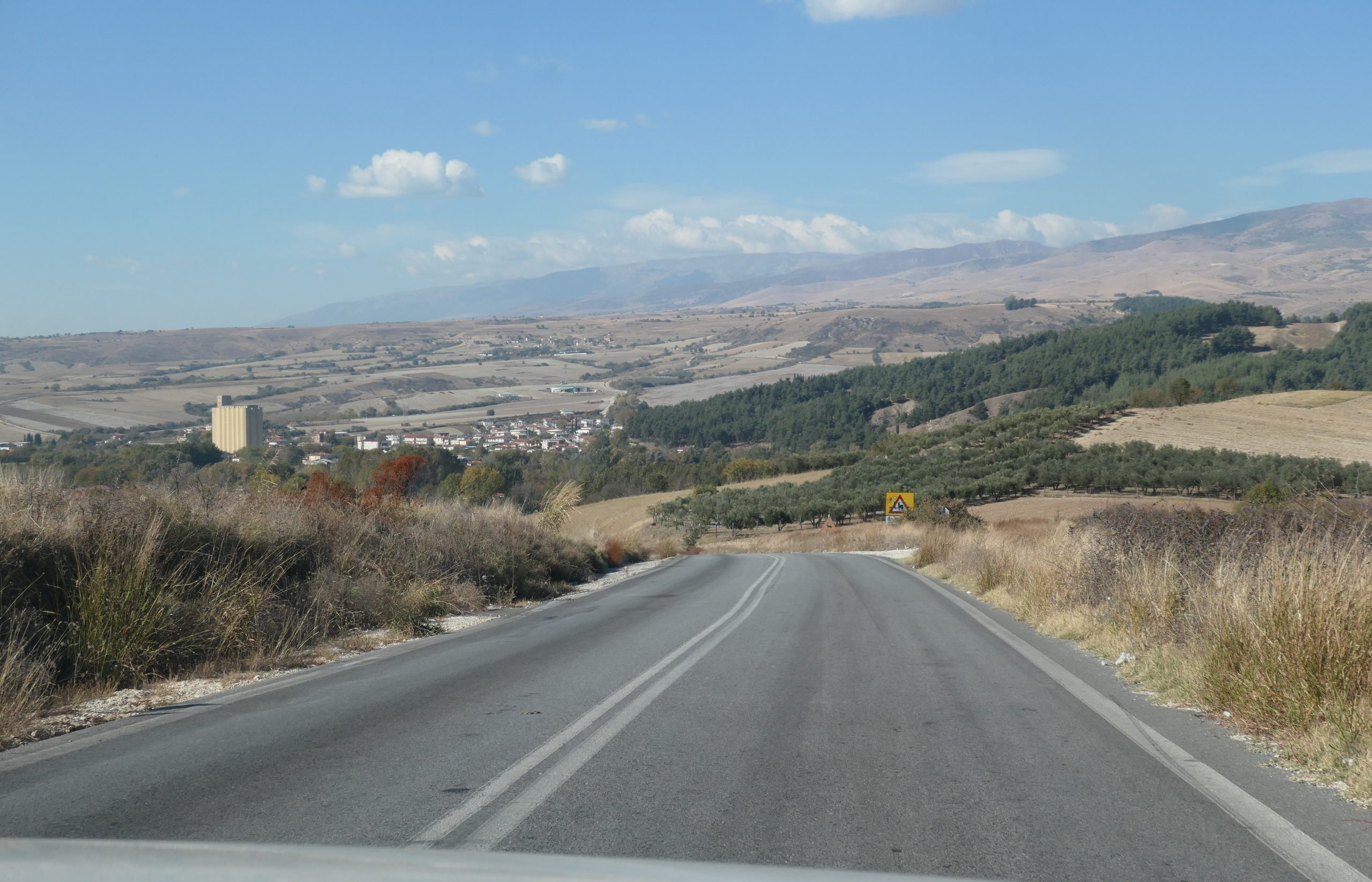
During the Balkan wars (1912-13) the Jewish population numbered approximately 1,800; when the Bulgarian army invaded the town, they burned down the main synagogue, the Jewish school and houses, and the Jews themselves were saved only upon the intervention of Jews serving with the Bulgarian forces. Some of the Jews took refuge in Bulgaria, others moved to Drama and Kavala. When the Greeks reoccupied the town, the Jewish community was reorganized.
In 1940, it had a membership of 600, and 596 were deported by the Nazis. Only three Jews were left there in 1948, and in the 1960s there were no Jews in Serres.
The cemetery of Serres was located where today are two large water reservoirs. We scanned the grass surrounding the reservoirs looking for some evidence of graves. Nothing. As we walked around the fence, all of a sudden, we stumbled upon piles of rock that somewhat resemble ancient tombstones. We were very unsure if these were the graves or construction rubbish from the building of the reservoirs. Looking at photos from the ESJF site we learned that these are indeed thought to be ancient tombstones that were thrown aside during the building of the water reservoirs.
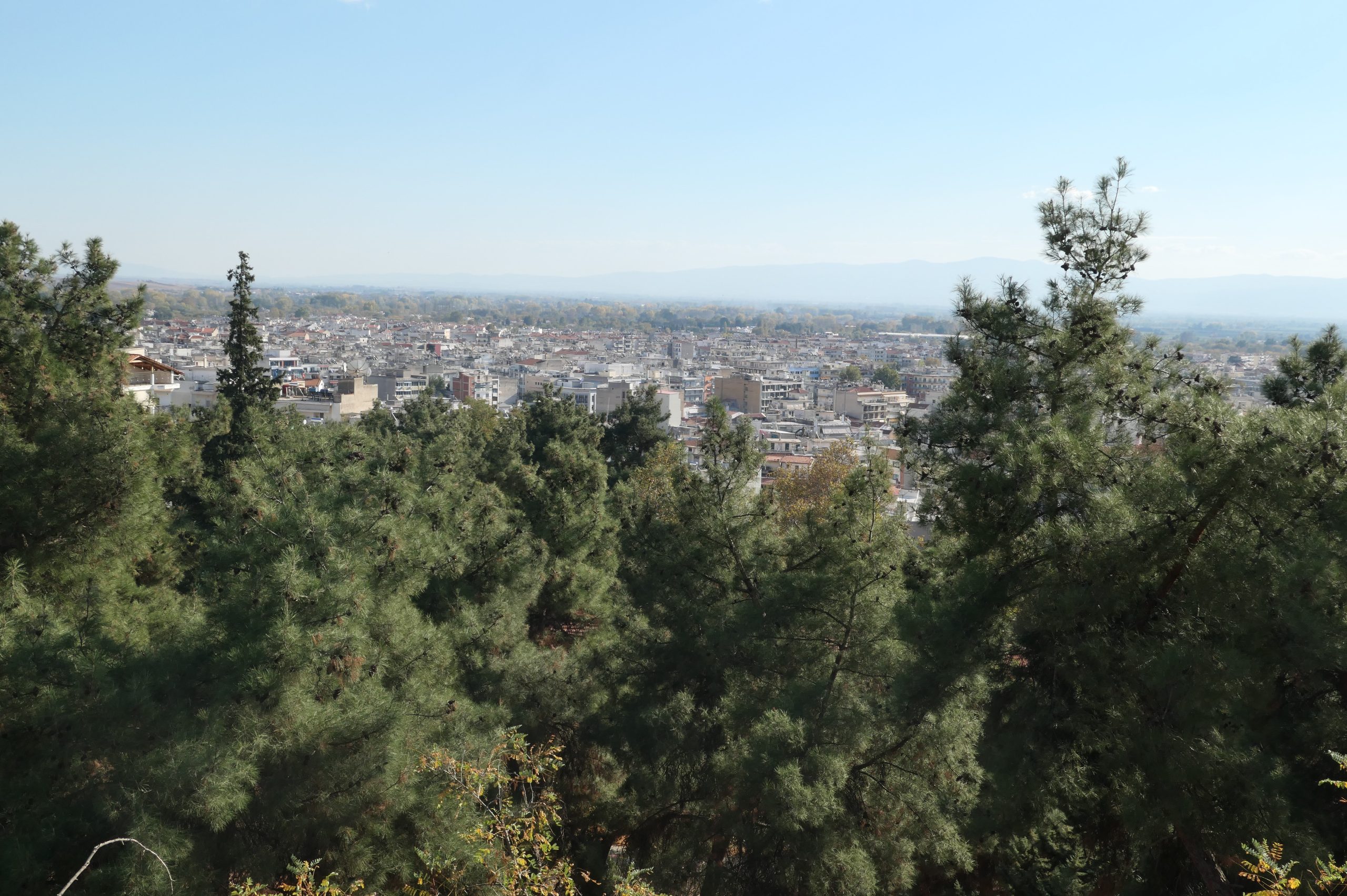
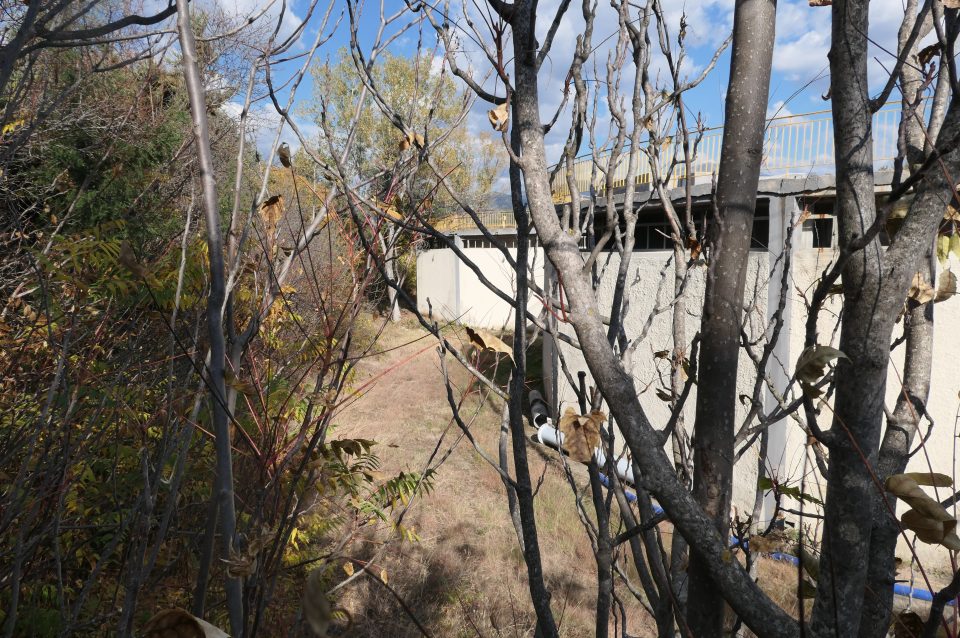
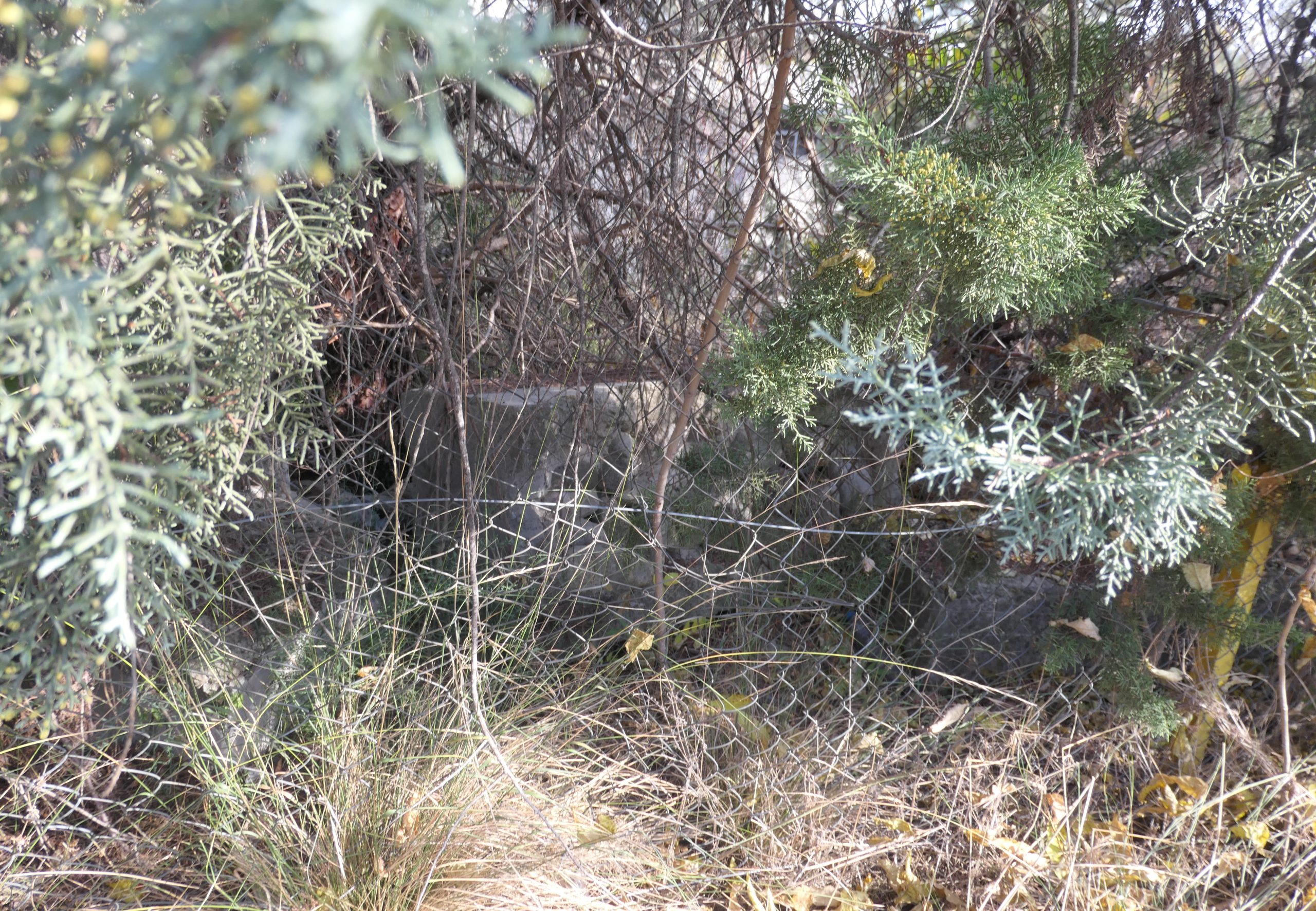
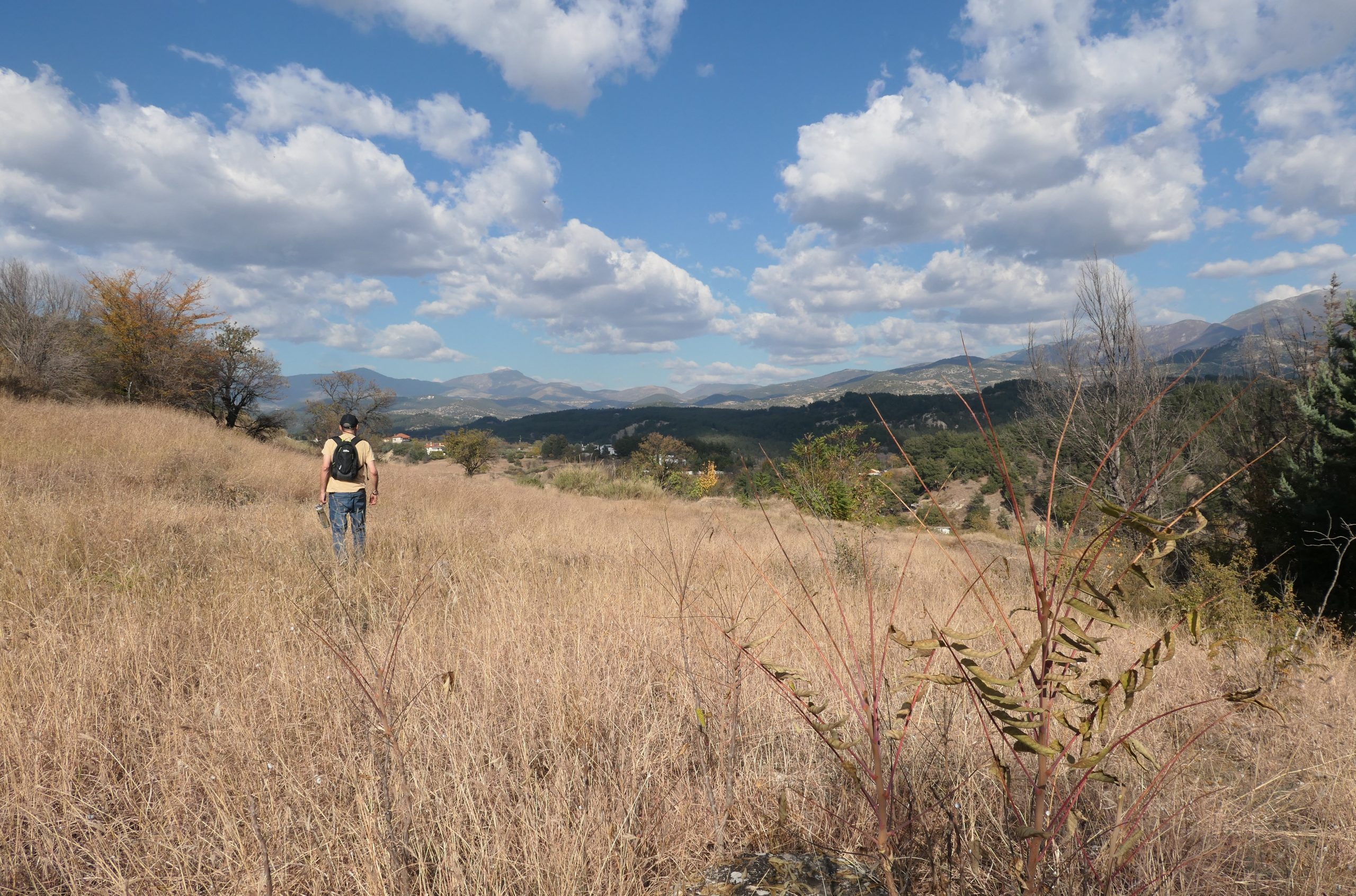
According to official German documents, in March 1943, a total of 4,273 people were deported from the Bulgarian occupation zone and none of them survived. This included 1,096 Greek Jewish families with 681 children under the age of 10. A tragic end to the Jewry of Northern Greece.
From Serres we still had a one and ½ hour drive to Veria, our destination for the night. We arrived there just as it was getting dark, checked into a beautiful Airbnb, unloaded the suitcases, parked the car (not an easy feat to find a parking space) and spent the evening cooking dinner and working on the blogs. Tomorrow we will get to know Veria.
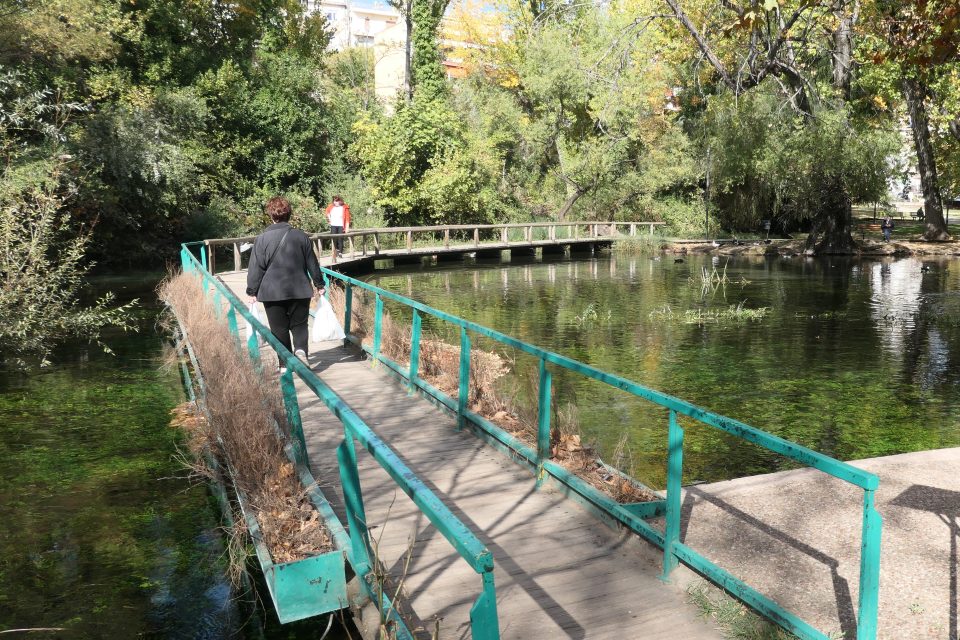
so much interesting history!